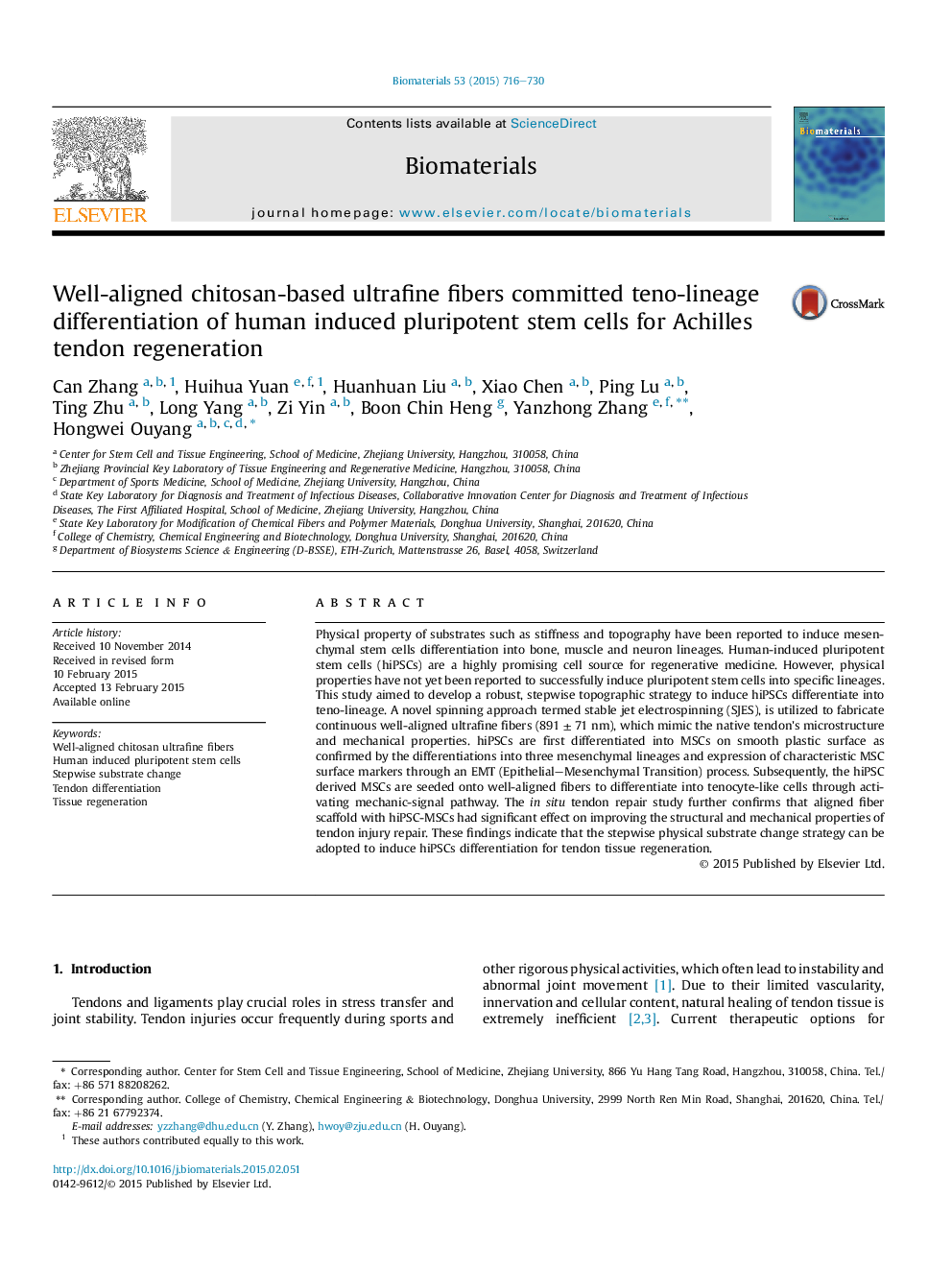| Article ID | Journal | Published Year | Pages | File Type |
|---|---|---|---|---|
| 6485872 | Biomaterials | 2015 | 15 Pages |
Abstract
Physical property of substrates such as stiffness and topography have been reported to induce mesenchymal stem cells differentiation into bone, muscle and neuron lineages. Human-induced pluripotent stem cells (hiPSCs) are a highly promising cell source for regenerative medicine. However, physical properties have not yet been reported to successfully induce pluripotent stem cells into specific lineages. This study aimed to develop a robust, stepwise topographic strategy to induce hiPSCs differentiate into teno-lineage. A novel spinning approach termed stable jet electrospinning (SJES), is utilized to fabricate continuous well-aligned ultraï¬ne ï¬bers (891 ± 71 nm), which mimic the native tendon's microstructure and mechanical properties. hiPSCs are ï¬rst differentiated into MSCs on smooth plastic surface as confirmed by the differentiations into three mesenchymal lineages and expression of characteristic MSC surface markers through an EMT (Epithelial-Mesenchymal Transition) process. Subsequently, the hiPSC derived MSCs are seeded onto well-aligned fibers to differentiate into tenocyte-like cells through activating mechanic-signal pathway. The in situ tendon repair study further confirms that aligned fiber scaffold with hiPSC-MSCs had significant effect on improving the structural and mechanical properties of tendon injury repair. These findings indicate that the stepwise physical substrate change strategy can be adopted to induce hiPSCs differentiation for tendon tissue regeneration.
Related Topics
Physical Sciences and Engineering
Chemical Engineering
Bioengineering
Authors
Can Zhang, Huihua Yuan, Huanhuan Liu, Xiao Chen, Ping Lu, Ting Zhu, Long Yang, Zi Yin, Boon Chin Heng, Yanzhong Zhang, Hongwei Ouyang,
